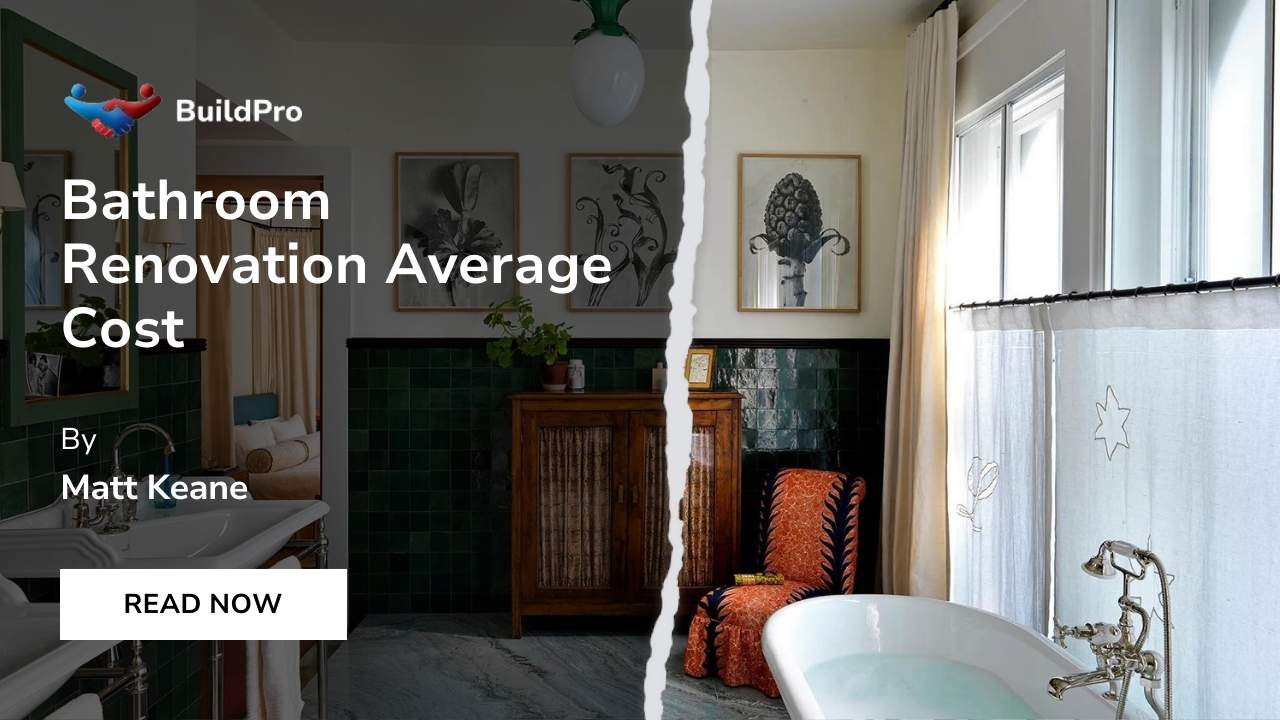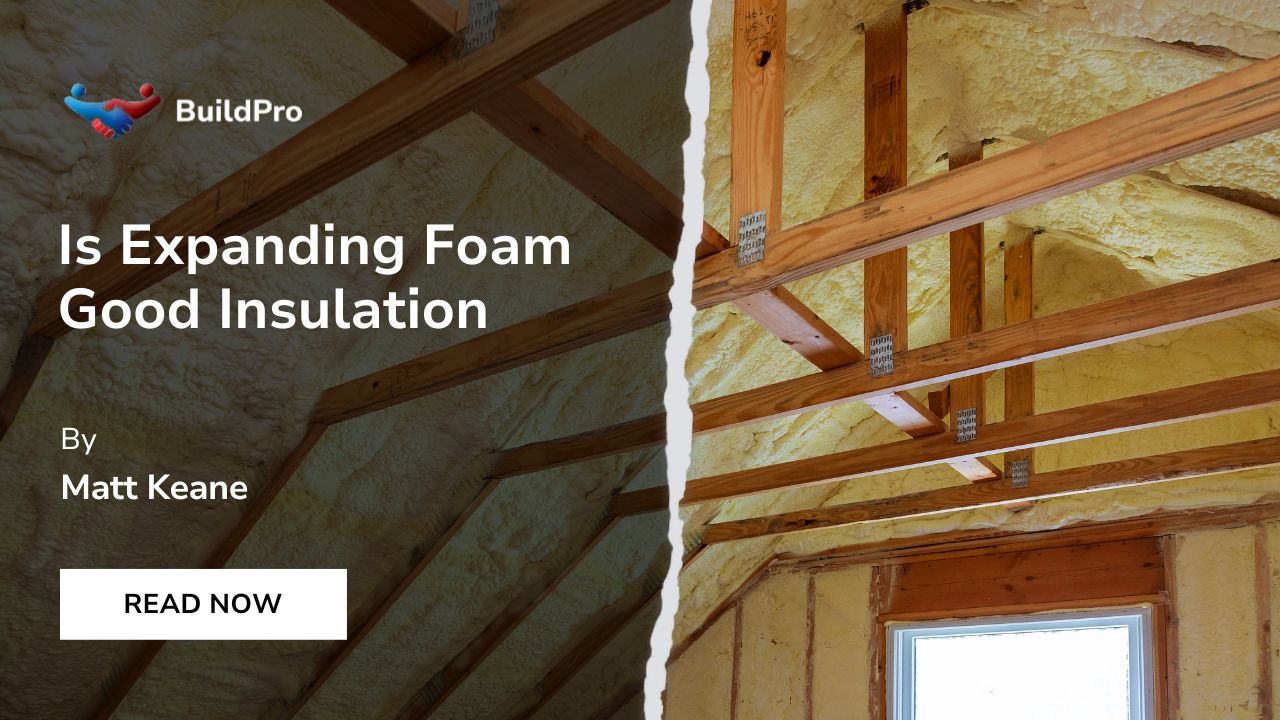Renovating your bathroom can be a big decision, and the first big question is often about cost. What does an average bathroom renovation really cost? It's not always a simple answer.
The total expense can vary greatly depending on several factors, such as the size of your bathroom, the materials you choose, how much you want to change, and the cost of labour in your area.
In this blog, we're going to break down these factors for you. Whether you're looking at a small update or a complete makeover, understanding these costs is key to planning your renovation.
We'll guide you through each element that contributes to the overall expense, helping you make informed choices and set a realistic budget for your dream bathroom makeover.
So, let’s start exploring what goes into the cost of transforming your bathroom.
Types of Insulation and Their Costs
When it comes to insulating your home in Ireland, there are various types of insulation to consider, each with their own associated costs. From loft and cavity wall insulation to external and internal wall insulation, as well as floor insulation, understanding the different options available can help you make an informed decision for your home.
Loft Insulation

Loft insulation is a smart move for us to keep our homes warm and reduce our energy costs. It's like putting on a cosy hat for our houses so heat doesn't escape through the roof.
As well, we can often find this type of insulation at good prices, which makes it very popular among homeowners in Ireland.
However, for the attic space alone, we might spend anywhere from €800 to €1000 to have it insulated properly. This cost feels even lighter when we think about how much money we can save on heating over time.
Plus, if a SEAI approved installer does the job, there might be grants that help cover some of the costs too!
Cavity Wall Insulation

Cavity wall insulation can cost between €7 and €10 per metre for a typical semi-detached house in Ireland. This means the total cost can range from €550 to €950. Proper insulation helps keep your home warm and reduces heating bills.
Remember, having an adequately insulated home can also make you eligible for grants, so it's worth exploring this option before making a decision on cavity wall insulation.
Next, let's talk about external wall insulation and its associated costs.
External Wall Insulation

Moving on to the next type of insulation, external wall insulation, is a great way to improve the energy efficiency of your home. It can cost between €6500 and €8000 for a mid-terrace house and as much as €17,500 and €20,000 for an end-of-terrace property in Ireland.
Furthermore, the cost per square metre generally ranges from €80 to €120 for rigid board insulation. However, it's important to note that there is a potential SEAI grant of up to €2,700 available for full external wall insulation by approved installers.
Consequentially, insulating the exterior walls can significantly reduce heat loss and lower your energy bills while making your home more comfortable. Consider exploring this option with the help of professional guidance and making use of available grants to offset some costs if you're considering this upgrade for your home.
Internal wall insulation

Now, let's talk about internal wall insulation. For a 3-bed semi-detached house, the cost of internal wall insulation can vary from around €800 to €1000. It's significant to note that if a SEAI-approved installer completes the work, potential grants may be available.
The installation will help make your home more energy-efficient and reduce heating costs.
In addition, rigid board insulation for internal walls generally ranges from €80 to €120 per square metre. This investment will not only save you money on energy bills but also make your living space more comfortable throughout the year.
Floor Insulation

When considering home insulation, floor insulation is another important aspect to think about. The cost of insulating a floor in Ireland can vary based on the size of the house and the type of material used.
For instance, for an average-sized semi-detached home, the cost can range from €800 to €1200. It's essential to explore different insulation materials and their costs, as well as potential grants available to help offset these expenses.
Factors such as thermal insulation and energy efficiency grants are crucial considerations when planning for floor insulation. Effective floor insulation not only helps in retaining heat within your house but also contributes significantly towards reducing heating costs and enhancing overall energy efficiency.
Factors Affecting the Cost of Insulation
The size of your house and the type of insulation material you choose can greatly affect the overall cost. Additionally, deciding whether to hire a professional or take on a DIY project will also impact the expenses.
Size of the House
The size of your house is a significant factor in determining the cost of insulation. For instance, the cost of insulating a 3-bed semi-detached house may range from €800 to €1000.
Similarly, larger homes will require more materials and labour, which can increase the overall expense significantly. Similarly, small apartments will have lower insulation costs than larger houses.
Therefore, it's important to consider the size of your property when budgeting for insulation expenses.
Insulation prices in Ireland can vary depending on the type and size of the property. For example, cavity wall insulation typically costs between €550 and €950 for a typical semi-detached house, while external wall insulation ranges from €6500 to €8000 for a mid-terrace house to as much as €17,500 to €20,000 for an end-of-terrace property.
Types of Insulation Material
When considering the type of insulation material, it's important to choose the most suitable option for your home. Depending on the area being insulated, different materials may be required.
For example, cavity wall insulation typically uses materials like mineral wool or polystyrene beads, while loft insulation commonly involves materials such as glass wool or rock wool.
Furthermore, external wall insulation often uses expanded polystyrene (EPS) boards or mineral wool slabs, providing a range of options to suit different needs and budgets.
It's essential to select an insulation material that best meets the specific requirements of each area of your home. Additionally, considering factors such as durability and energy efficiency can help ensure long-term cost savings and comfort for your household.
Hiring a Professional vs. DIY
When insulating your home, the choice between DIY and hiring a professional is crucial. DIY insulation can be budget-friendly but requires significant time, effort, and skill.
But professionals can give you ease. They handle everything from project planning to design and construction, covering all aspects of home improvement. Their network includes specialists in areas like interior design, heat pumps, windows, doors, and home insulation, ensuring that you receive comprehensive and dependable services.
If you're looking for quality and efficiency, opting for a professional is a wise decision. In this regard, Build Pro stands out as a reliable choice. As a platform connecting homeowners with trusted home improvement professionals, Build Pro is the perfect solution for your needs in insulation, renovation, extension, and architectural design.
Grants Available for Insulation
If you're looking to save on insulating your home, there are a number of grants available through the SEAI. These grants can help offset the expense of insulation and improve the energy efficiency of your home.
SEAI grants
We should explore the SEAI grants to help with insulation costs. Depending on the work, homeowners can get up to €2,700 for wall insulation and up to €4000 for attic insulation.
This could significantly reduce the overall cost of insulating your house. To apply for these grants, make sure you use an approved contractor and follow the application process on the SEAI website.
Once we know about available grants, let's delve into understanding our options for home insulation.
Eligibility criteria
To be eligible for SEAI grants, we need to meet certain criteria. For example, the homeowner must own a property built before 2006 to qualify for external wall insulation grants. Additionally, using an SEAI-approved contractor is necessary to receive these grants.
It's also important to note that different types of properties may have different eligibility requirements, so it's essential to check with SEAI or your local authority beforehand.
Meeting these criteria can help homeowners take advantage of available grants and reduce the cost of insulating their homes.
How to Apply for an SEAI Grant?
To apply for a SEAI grant, you will need to follow these steps:
- Check your eligibility. Ensure that you meet the criteria for the grant, including using a SEAI-approved contractor and having a BER assessment.
- Get quotes: Obtain quotes from several registered contractors who have been approved to carry out the work under the grant scheme.
- Apply online: Complete the online application form on the SEAI website, providing all necessary details and attaching the required documents.
- Await approval: Once your application is submitted, it will be reviewed by SEAI, and if approved, you will receive a letter of offer outlining the grant amount and conditions.
- Commence work: Upon acceptance of the grant offer, engage a registered contractor to carry out the insulation work in line with SEAI standards and guidelines.
- Claim reimbursement: After completion of the work, submit all required documentation to SEAI for review and claim reimbursement for the agreed grant amount.
Final Words!
Insulating a house in Ireland can range from affordable to costly, depending on various factors. The types of insulation and their costs vary significantly, offering multiple options for homeowners to choose from.
By understanding the practicality and efficiency of different strategies, homeowners can make informed decisions about insulating their homes. Have you considered applying for SEAI grants or exploring DIY options to reduce insulation costs?
Improving energy efficiency through insulation not only saves money but also has a positive impact on the environment. For further guidance, explore additional resources on home insulation and grants available in Ireland.
















